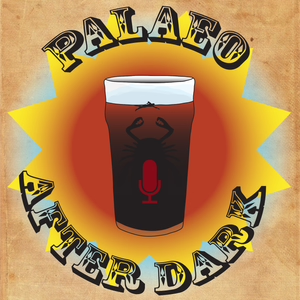
Palaeo After Dark
James Lamsdell, Amanda Falk, and Curtis Congreve
All episodes
Best episodes
Top 10 Palaeo After Dark Episodes
Goodpods has curated a list of the 10 best Palaeo After Dark episodes, ranked by the number of listens and likes each episode have garnered from our listeners. If you are listening to Palaeo After Dark for the first time, there's no better place to start than with one of these standout episodes. If you are a fan of the show, vote for your favorite Palaeo After Dark episode by adding your comments to the episode page.

Podcast 291 - DoInG vErY wElL tHaNk YoU
Palaeo After Dark
08/25/24 • 106 min
The gang discusses two papers that...
ok look. I'm going to level with you. No one in this podcast slept more than a few hours before we started recording. One of us was stuck on a plane and didn't get back home until 5 am the day of recording. Everyone was tired and stressed and so we all use this time to vent and drink. Sure, there are papers we talk about: growth rates of Triassic archosaurs and geographic gaps in our early tetrapod record. However, if what you want is focused discussion of the papers, this is not the podcast for you (it takes us 8 and a half minutes to get to the first paper). But if you like us at our most rambling, then do I have a podcast for you!
Up-Goer Five (Curt Edition): Last edition?
Oh no the up-goer five word thing has gone down. I can not make an up-goer for this. That makes sense for this because also this time the friends are tired and talking about lots of things that are not the papers, which are about how animals get big and where animals are. But since the nice place that lets us do the word thing is gone, we might not be able to do this ever again. Sorry!
References:
Marsicano, Claudia A., et al. "Giant stem tetrapod was apex predator in Gondwanan late Palaeozoic ice age." Nature (2024): 1-6.
Klein, Nicole. "Diverse growth rates in Triassic archosaurs—insights from a small terrestrial Middle Triassic pseudosuchian." The Science of Nature 111.4 (2024): 1-5.
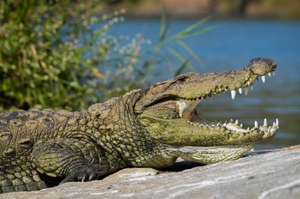
Podcast 309 - Wet Hot Archosaur Summer Begins
Palaeo After Dark
06/01/25 • 78 min
The gang kicks off a summer of archosaurs by talking about crocodyliforms. The first paper describes an early Cenozoic large notosuchian, and the second paper investigates how cryptic species impacts divergence times within the clade. Meanwhile, Curt diagnoses a problem, James tries to “help”, and Amanda does not care.
Up-Goer Five (Curt Edition):
The friends talk about two papers that look at animals that today most of the time live in water and grab food from the edge of the water and you should never smile at. The first paper a really big one of these animals that lived a long time ago. This animal was found after a really big rock hit the ground and killed most of the big animals. This big animal shows that some of the animals that you should never smile at were able to live through the big rock hitting.
The second paper looks at animals you should never smile at today and finds that there are some animals that look the same but are not actually the same animals. This paper uses these animals that look the same but are different and finds that they have been different for a long time. This means that if we want to try and make sure that these animals are safe, we can not just say that animals that look the same are going to do the same things when things change.
References:
Bravo, Gonzalo Gabriel, et al. "A new notosuchian crocodyliform from the Early Palaeocene of Patagonia and the survival of a large-bodied terrestrial lineage across the K–Pg mass extinction." Proceedings B 292.2043 (2025): 20241980.
Darlim, Gustavo, and Sebastian Höhna. "The effects of cryptic diversity on diversification dynamics analyses in Crocodylia." Proceedings B 292.2043 (2025): 20250091.
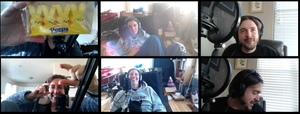
03/15/20 • 106 min
The gang discusses two papers that look at the human impact on the fossil record. The first paper runs multiple model studies to try and determine when hominines (the group that includes all of our ancestors) first began significantly impacting the biosphere. The second paper estimates what our future fossil record may look like by using the state of Michigan as a model system (much to Amanda’s delight). Meanwhile, Amanda attempts to train a cat, Curt and James invent the best machine, James has his mind blown, and everyone wonders what the “prepper layer” of the Anthropocene will look like in a few million years.
Up-Goer Five (Curt Edition):
Our friends talk about how people have changed the world. First, they talk about how big brains might have led to lost of animals dying. This first paper looks at how brains got larger in the great great great great parents of people over time. They run a lot of numbers in a computer in order to find out if the real big animals that died went away because of people or because of changes in the places where these animals live. They look at how big the brains of these people were, as well as how much rain fell and if there were trees. What they find is that, after running all the numbers, is that the best answer out of all the things they looked at was that these animals started to die when the brains of people got bigger. They think this could mean that the people with bigger brains started to take food from some of these big animals, and that made it harder for these big animals to stay living.
The second paper looks at what we will leave behind after people are gone in the rocks. It uses a state that looks like a hand (and which one of our friends really really likes) as a way to look into this. Turns out, people cover things in ground a lot more than would usually happen without people. But people only cover in ground a small number of animals, like people, dogs, cats, and animals that we use on places where we make food. This means that the rocks after we are gone will look very different from the rocks before us. These rocks will be filled with just a few things, and most of those things will probably be in the same position. Also, a lot of the animals will all be men and all will have died for the same reasons.
References:
Faurby, Søren, et al. "Brain expansion in early hominins predicts carnivore extinctions in East Africa." Ecology Letters.
Plotnick, Roy E., and Karen A. Koy. "The Anthropocene Fossil Record of Terrestrial Mammals." Anthropocene (2019): 100233.

Podcast 180 - Worms and Snails
Palaeo After Dark
02/02/20 • 74 min
The gang returns back from their winter break to discuss two papers that look at the important information we can glean from soft-bodied organisms in the fossil record. First, we take a look at a paper that shows some incredible preservation of Cretaceous snails in amber and how we can use that exceptionally preserved material to infer important information about the evolutionary history of these groups. Second, we talk about a cool example where hypotheses pulled from trace fossils can inform the distribution of modern worm species. Meanwhile, Amanda was not content with being driven mad by just TWO cats, James somehow manages to complain about being good at things, Curt spills the secrets on his friends, the internet TOTALLY doesn’t mess up our recording, SpaceX should probably paint their satellites, and we completely stay on topic this entire time..... believe me.....
Up-Goer Five (Curt Edition)
The friends talk about two papers about things that have soft bodies. First, the friends talk about a paper where a soft animal who makes a hard home out of rock that it carries around with it was stuck in some stuff that comes off of trees. This stuff that comes off of trees made it so that things we usually do not see got saved in the rocks. This allows us to see all of these different soft things that don't show up in rocks. People used these bits of tree stuff with soft things in them to find out that some of the soft things we see today in these animals that make a home for themselves out of rock may have first showed up very very long ago. They use this to try to find out when these groups of animals may have first showed up.
Next, our friends look at the changes in broken up bits of rock that form from soft and long animals live in the ground. As these animals move through the ground, they leave behind remains of where they were that can be seen in the broken up bits of rock they live in. These remains are usually very much the same when they are made by soft and long animals which live in very much the same way. One type of remain is usually found in places that are cold, but some people think they have found some of these remains in places that are usually pretty hot. This might be because there are ways that water moves which can cause areas that are usually very hot to have very cold water in them. That might make it just right for these soft and long animals which form these remains to live and be happy. To figure out if this is true, people went to a very warm place where in one side of the land the water was very cold and on the other side it was very warm. What they found was that the cold side had these remains, but the warm side did not. This means that these animals can live in warm places if the changes in the water allow for places with cold water.
References:
Hirano, Takahiro, et al. "Cretaceous amber fossils highlight the evolutionary history and morphological conservatism of land snails." Scientific reports 9.1 (2019): 1-16.
Quiroz, Luis I., et al. "the search for an elusive worm in the tropics, the past as a key to the present, and reverse uniformitarianism." Scientific Reports 9.1 (2019): 1-8.
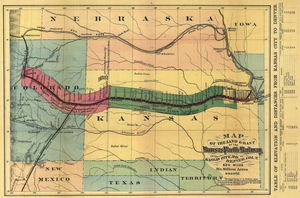
Podcast 178a - "Paradise Falling" Part 1
Palaeo After Dark
12/22/19 • 113 min
The gang celebrates the end of the year by taking another break to play Fiasco, a crime/noir storytelling game by Bully Pit Games. This campaign will be broken into two parts.
The afternoon sun cast long, hazy blades of light across the linoleum floor of the Blue Label Diner in downtown Paradise Falls. Bill Larsen took a moment to stretch his aching back before hunching again to buff the counter with his cleaning rag. With weary eyes, he turned his attention back to the out-of-towner who was furtively sipping her coffee. She pulled out a notebook and pen from her jacket pocket and set them expectantly on the counter, waiting for Bill to speak.
“Do ya want some apple pie? Best in town.” No other restaurant in Paradise Falls sold apple pie, and Bill knew that.
The woman shook her head, “Mr Larsen, I’m just here to learn the facts about what happened in your town. So please.... from the beginning...”
“How did it all happen? Well that’s a long story.” He paused and gave a winking smirk “Ya sure ya don’t need somethin’ more to eat?”
The woman tapped on her notebook.
“Let’s see, well to understand any of it ya have to go back to the beginning. Ya see, first came the storm. Terrible winds ripped through our poor town like the gates of hell just opened up. Thank God most of the town was spared. Well.... except for the Tully farm. Such a waste really. Beautiful property that farm, and been with the family for generations. Pity Miss Tully had to sell. But in the long run, sad as it is to say, and I do feel just awful sayin’ it, but in the long run I think ya gonna see that sellin’ that farm was the best thing that ever happened to this town.”
The door to the Blue Label Diner swung open as another patron entered. With him came billowing black smoke from the outside, some of the thick soot that was beginning to blanket the entire downtown ; a new daily ritual for Paradise Falls . The sunlight through the windows began to wane as the world outside became consumed in an ever thickening dark cloud of chemicals. But inside the diner there was coffee and pie.
"Paradise Falling" is a surreal tale of paranoia, failure, and cold hard capitalism.
"Andreas Theme" Kevin MacLeod (incompetech.com) Licensed under Creative Commons: By Attribution 3.0 http://creativecommons.org/licenses/by/3.0/

Podcast 169 - Learning about Agnostids
Palaeo After Dark
08/18/19 • 86 min
The gang takes some time to discuss two papers about agnostids, a strange group of trilobite-like arthropods whose evolutionary history has been the subject of considerable debate. First, we discuss a short paper summarizing the history of the agnostid debate, and then we discuss a brand new paper using new material and Bayesian phylogenetics to offer a fresh new hypothesis. Also, James channels frustration into fun, Amanda nearly has her house destroyed by cats, and Curt asks the Star Wars questions no one wanted answered.
Up-Goer Five (Amanda Edition):
Today our friends talk about small animals that have no eyes that might be sisters of animals that live in the water that have three parts and big eyes, many legs, and can make themselves into a ball. The first paper talks about the small animals with no eyes and how hard it is to make one of these animals for people to look at. They talk about the past of the animal and where it lived, and who it might be close sisters to. They say that a very cool area where we find these animals lets us see the legs and that they are different, also that they have a different mouth, and that maybe they actually do have eyes but they are on the mouth? They are weird animals. The second paper also talks about these animals, but does not focus on making the animals for people to look at. It looks at these animals from a different very cool area and shows their legs are sort of like the legs of animals that live in the water that have three parts and big eyes, many legs, and can make themselves into a ball. The paper is different from others, though, because it says that these animals are really either part of or sister to animals that live in the water that have three parts and big eyes, many legs, and can make themselves into a ball. But that is the only part of the tree that really is strong, so maybe who knows still? Our cat friend is writing this and did not really know what was going on that day, and does not know much about these cool animals with maybe no eyes that might really be animals that live in the water that have three parts and big eyes, many legs, and can make themselves into a ball.
References:
Eriksson, Mats E., and Esben Horn. "Agnostus pisiformis—a half a billion-year old pea-shaped enigma." Earth-Science Reviews 173 (2017): 65-76.
Moysiuk, J., and J-B. Caron. "Burgess Shale fossils shed light on the agnostid problem." Proceedings of the Royal Society B286.1894 (2019): 20182314.
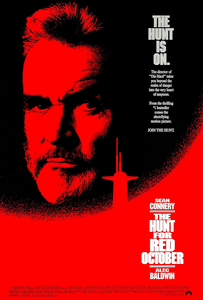
Podcast 273 - The Hunt for Red Plankton
Palaeo After Dark
11/19/23 • 84 min
The gang discusses two papers that look at plankton through time. The first paper looks at some Cambrian acritarch fossils and shows that they are likely colonial algae, and the second paper looks at how shifting temperature affected plankton distribution across the Cenozoic. Meanwhile, everyone stays completely on task with the stated goals of this podcast: a detailed (and wrong) discussion on the events of the movie “The Hunt for Red October”. Yes, it is going to be “one of those” podcasts.
Up-Goer Five (Curt Edition):
The friends talk about two papers that look at things that live in the water without having to move parts to stay in the water and maybe they are single cells and maybe they are groups of cells. The first paper looks very very old things that live in the water. These old things are so old and hard to figure out that people are not always sure what they are. These things are often thought to be all single cells. This paper shows that some of these things that are very old might be groups of cells that are living together. The way that these cells group together does look like some things that live in the water today that make food from the sun. This paper shows that this type of cell or something like it might have been around a very very long time ago.
The second paper looks at how where things living in the water but not moving and maybe they are single cells and maybe they are groups of cells, could have lived when things got cold in the past. They see that there are changes in the types of these things over time and where the live. They show that the way things are today is because it was getting colder. It also shows that, when things warm up, we might see some big changes in where these things are.
References:
Woodhouse, Adam, et al. "Late Cenozoic cooling restructured global marine plankton communities." Nature 614.7949 (2023): 713-718.
Harvey, Thomas HP. "Colonial green algae in the Cambrian plankton." Proceedings of the Royal Society B 290.2009 (2023): 20231882.
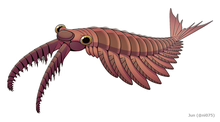
Podcast 267 - The Blender Episode
Palaeo After Dark
08/27/23 • 85 min
The gang discusses two papers that use Blender 3d modeling techniques (and other functional morphology techniques) to study arthropod morphology. The first paper looks at trilobite enrollment and the second paper looks at the anomalocaris great frontal appendages. Meanwhile, James likes horses, Amanda has some name ideas, and Curt fails to segue.
Up-Goer Five (Amanda Edition):
Today our friends look at two papers that talk about things with legs that have many parts. The first paper looks at very old pretty large things with mouth legs that people can't decide if they were strong or not strong. The paper does lots of computer stuff to figure out just how strong the mouth legs are. They find that the mouth legs are not as strong as people thought they might be and so they did not eat things with very hard parts, probably, but things that were not hard at all. The second paper looks at how cute little things with legs that have many parts might have made themselves into balls. There are many ways that they might have made themselves into balls, with the way the head fits with the back end. They think only one or two were very good, and that it might have changed as the cute little things with legs that have many parts grew up.
References:
Esteve, Jorge, and Nigel C. Hughes. "Developmental and functional controls on enrolment in an ancient, extinct arthropod." Proceedings of the Royal Society B 290.2000 (2023): 20230871.
Bicknell, Russell DC, et al. "Raptorial appendages of the Cambrian apex predator Anomalocaris canadensis are built for soft prey and speed." Proceedings of the royal society B 290.2002 (2023): 20230638.
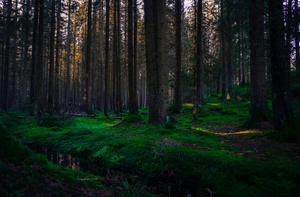
Podcast 276a - In the Woods Somewhere Part 1
Palaeo After Dark
12/31/23 • 101 min
A cleric, a wizard, and a paladin prepare for a trip through a dangerous wood. What could go wrong?
"The Builder", “Constancy Part Three” by Kevin MacLeod (incompetech.com) Licensed under Creative Commons: By Attribution 4.0 License http://creativecommons.org/licenses/by/4.0/
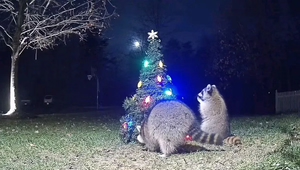
Podcast 298c - Operation Raccoon Part 3: The Big Score
Palaeo After Dark
12/29/24 • 82 min
Sausage, Biscuits, Eggey, and Crankshaft make their way into the big mansion. Will they be able to pull off the heist of the century and deliver a perfect Christmas for the raccoons of the junkyard, or will they all go down in a blaze of glory?
"Sergio's Magic Dustbin" and “Silent Night” from Kevin MacLeod (incompetech.com) Licensed under Creative Commons: By Attribution 3.0 http://creativecommons.org/licenses/by/3.0/
Check out “Raccoon Sky Pirates” on itch,io https://hecticelectron.itch.io/raccoon-sky-pirates
Show more best episodes

Show more best episodes
FAQ
How many episodes does Palaeo After Dark have?
Palaeo After Dark currently has 324 episodes available.
What topics does Palaeo After Dark cover?
The podcast is about Evolution, Natural Sciences, Podcasts, Science, Paleontology and Biology.
What is the most popular episode on Palaeo After Dark?
The episode title 'Podcast 281 - Climate and Extinction' is the most popular.
What is the average episode length on Palaeo After Dark?
The average episode length on Palaeo After Dark is 92 minutes.
How often are episodes of Palaeo After Dark released?
Episodes of Palaeo After Dark are typically released every 14 days.
When was the first episode of Palaeo After Dark?
The first episode of Palaeo After Dark was released on Mar 10, 2013.
Show more FAQ

Show more FAQ